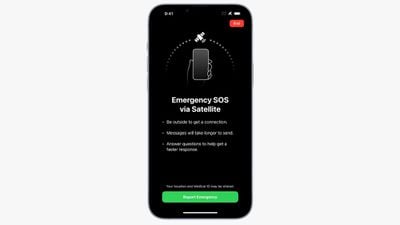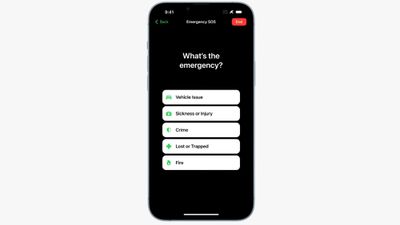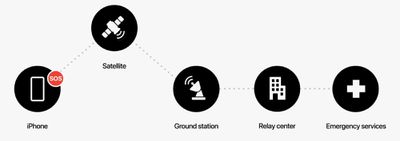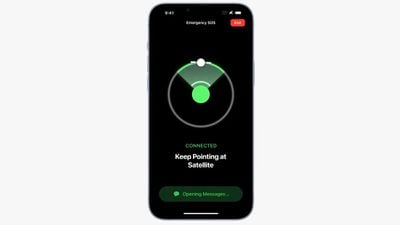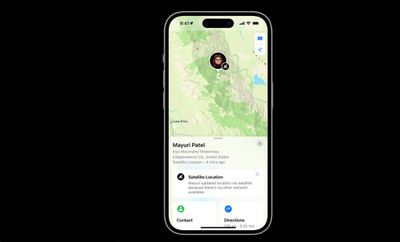With the iPhone 14 models, Apple is introducing a new Emergency SOS via satellite feature that is designed to allow emergency messages to be sent even when cellular and WiFi connections are unavailable.
We thought we’d highlight some of the features of the new satellite functionality for those of you who are curious about how it works.
When It Works
Satellite connectivity is available to be used whenever you are out of range of WiFi or cellular and need to send an emergency message.
Apple says that it was designed for use in open spaces with a clear line of sight to the sky, so performance may be impacted if there are trees or buildings that are nearby.
Messaging Options
You can’t make phone calls using the SOS via Satellite feature, but you can send short text messages. The iPhone will actually front-load vital questions to assess your situation, and it will send that information to emergency personnel as soon as you’re connected.
Apple created a compression algorithm that makes text messages three times smaller to speed up communication as much as possible.
If you’re in an area where emergency services can receive text messages, the text message will be sent directly, otherwise it will go to a relay center with Apple-trained specialists that will be able to place an emergency call for you.
Accessing Satellite Connectivity
Using satellite functionality requires your iPhone to connect to a satellite in the sky, so the iPhone will walk you through where to point your iPhone to get it connected to the nearest satellite.
Time Delays
Apple says that if you have a clear view of the sky, a short message can be sent within 15 seconds, but it can also take several minutes if there are obstructions.
Find My Integration
Through satellite connectivity, iPhone users can share their location over Find My even when there is no cellular or WiFi connection, which provides additional security for those camping or hiking in remote areas.
Crash Detection
The iPhone 14 models have a new dual-core accelerometer that can detect G-force measurements up to 256Gs, and a new high dynamic range gyroscope, both of which are for Crash Detection. Crash Detection is a new feature that pairs with emergency satellite, as it allows you to get help even if you crash in a remote location.
Globalstar Partnership
According to an SEC filing submitted following Apple’s event, Apple is working with Globalstar on the satellite connectivity feature. Globalstar will be Apple’s satellite operator, and it has agreed to allocate 85 percent of its current and future network capacity to support Apple’s iPhones.
Globalstar and Apple’s contract says that Globalstar will provide and maintain all resources, including personnel, software, satellite systems, and more, and maintain minimum quality and coverage standards.
Pricing
Apple has not provided details on how much satellite connectivity will cost, but all iPhone 14 users will get two years of satellite connectivity for free.
Availability
Satellite connectivity will be available in the United States and Canada on all iPhone 14 models. International travelers who visit the United States and Canada can use Emergency SOS via satellite, except if they bought their phone in China mainland, Hong Kong, or Macao, as Emergency SOS via satellite isn’t offered in those countries.
Apple says that Emergency SOS via satellite might not work in places above 62° latitude, such as northern parts of Canada and Alaska.
Launch Date
Emergency SOS via satellite is set to launch in November.


